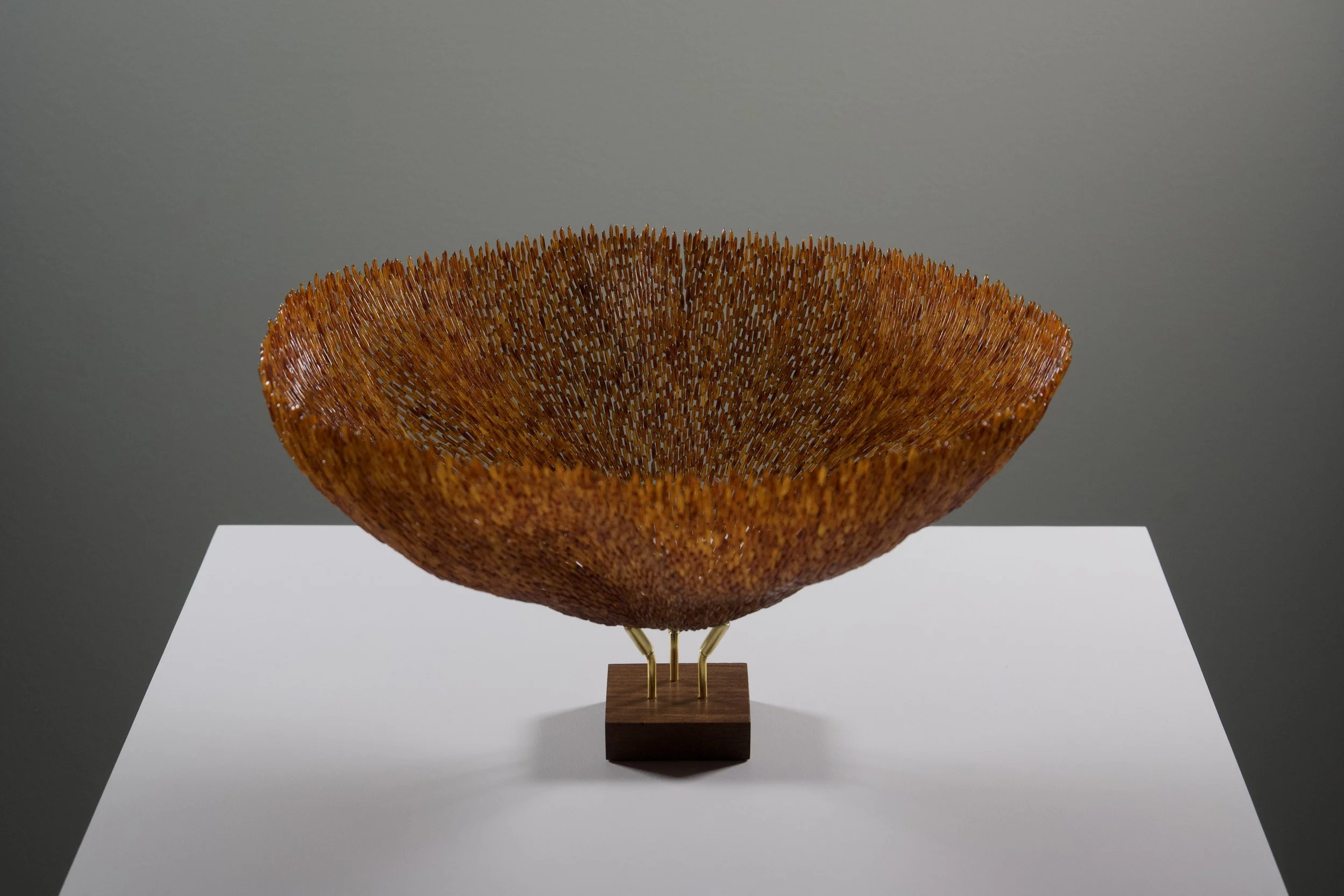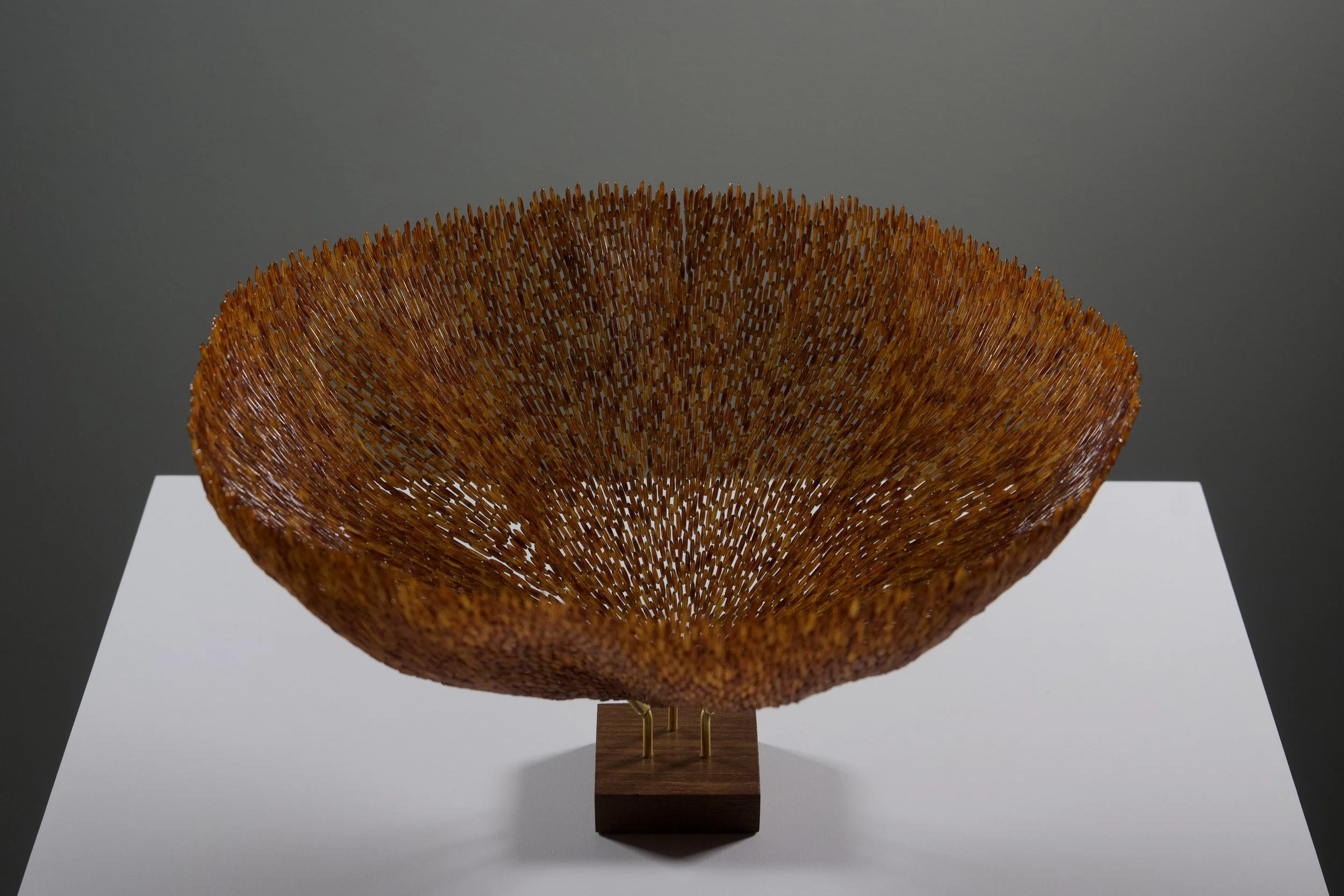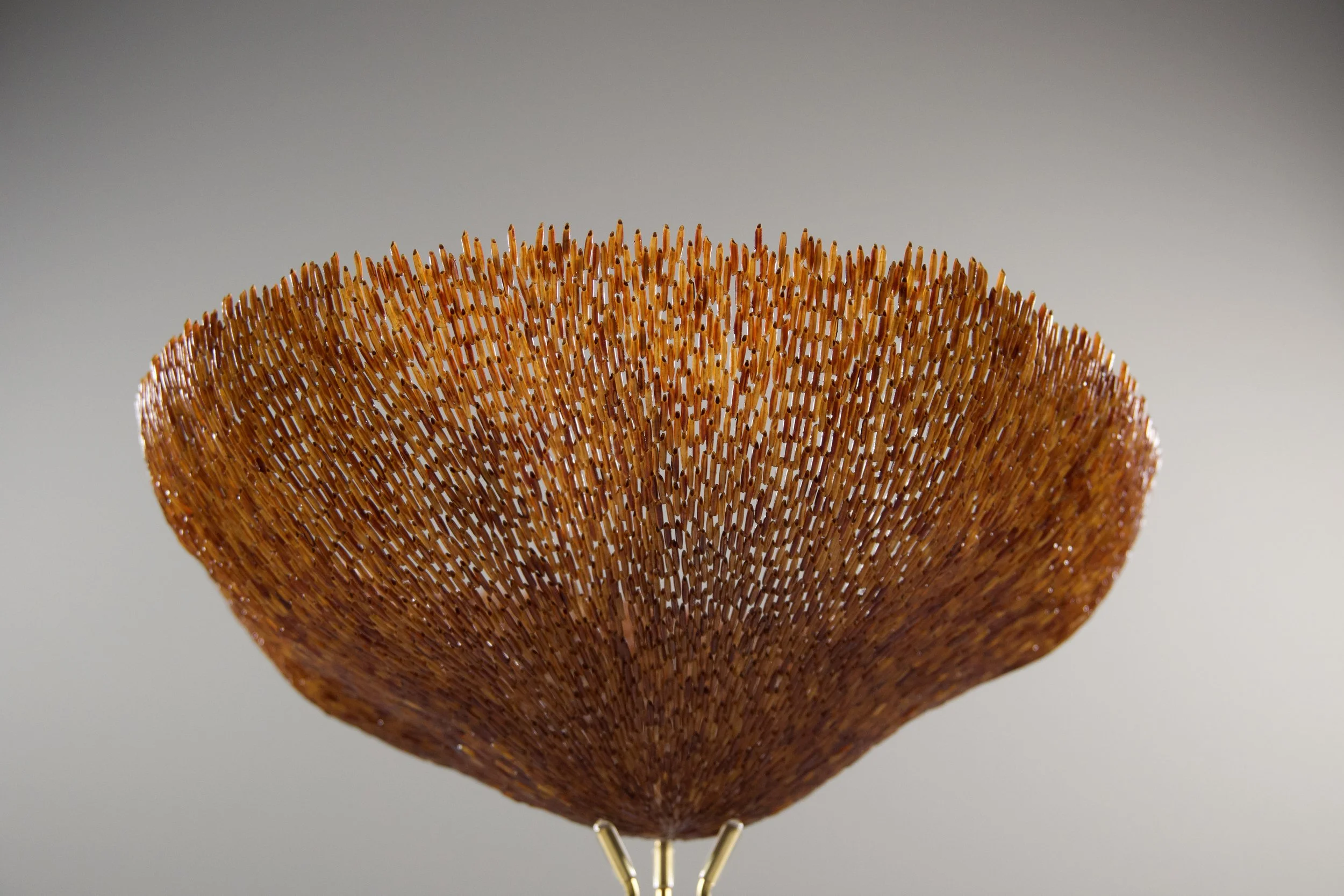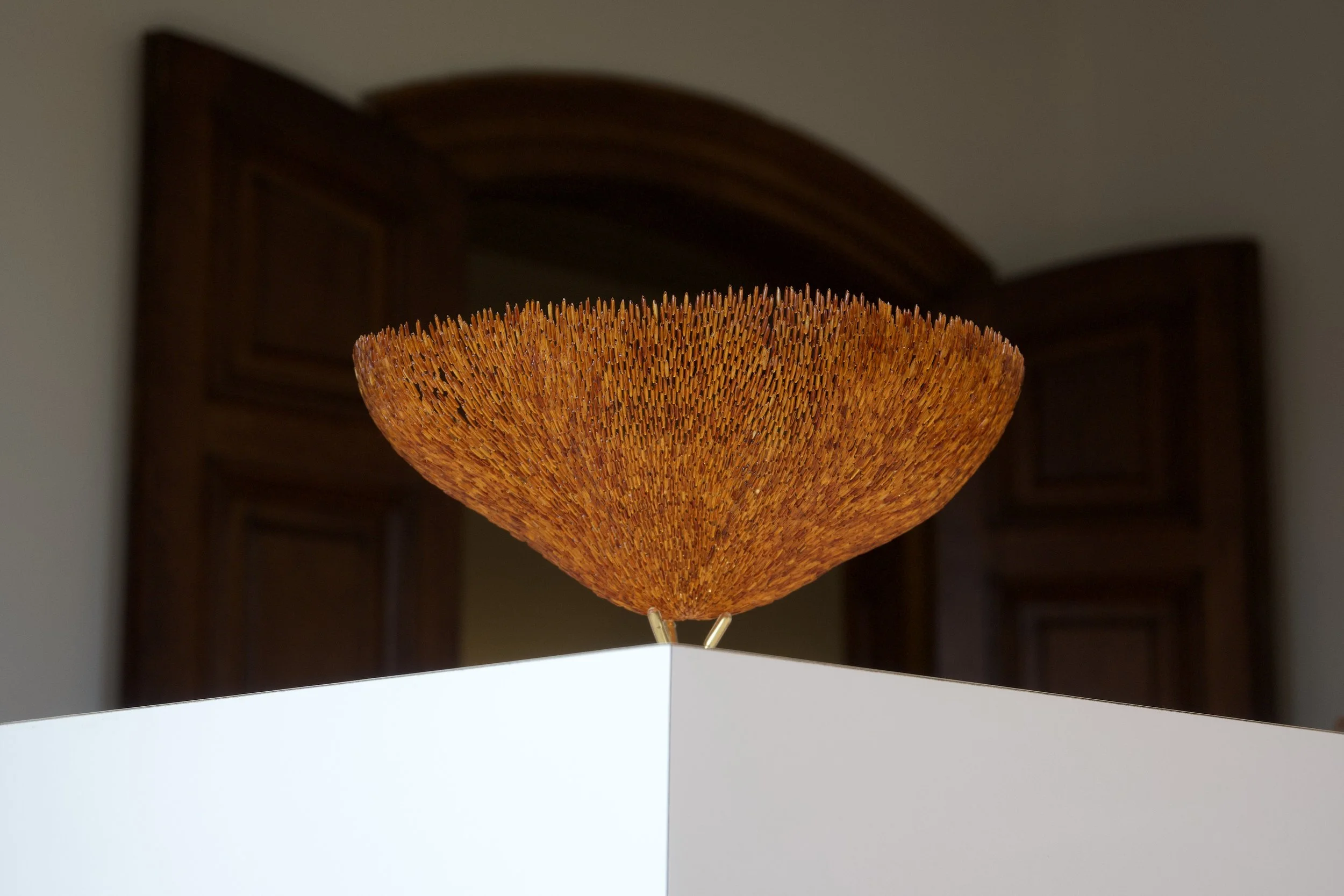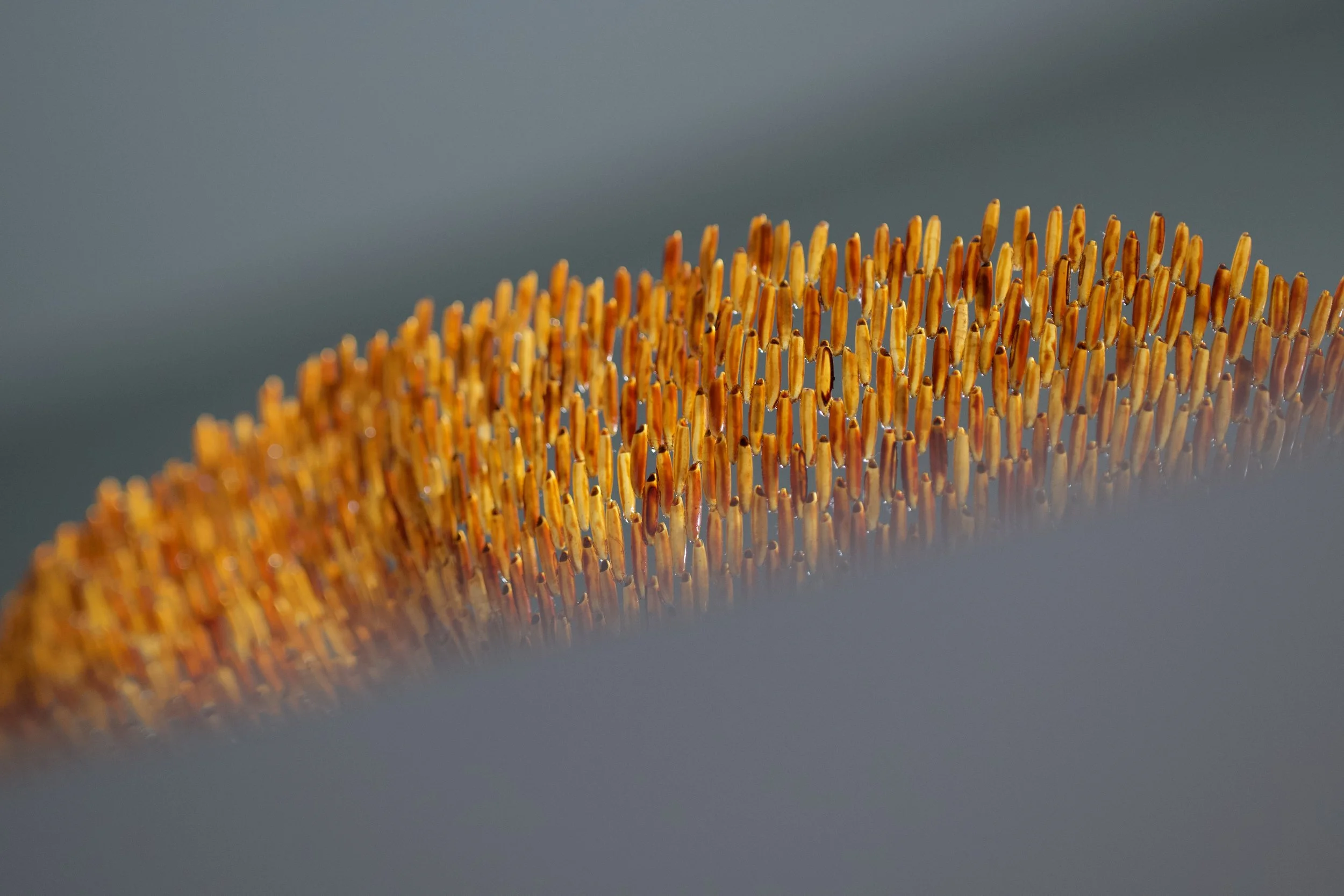Making a sculpture from rice comes with many limitations. As a seed, rice shrinks, cracks, grows moldy, and rots over time. Lacquer plays a crucial role in protecting the rice, preserving it in a semi-permanent state. The lacquer, applied and dried three or more times, evenly coats the surface of the rice, preventing oxidation and rotting. It also forms a strong layer, thereby improving durability. The strong scent of the resin helps deter insects as well.
The process begins with gleaning about 11,000 rice grains from the rice container. Each grain, coming from nature, has an irregular shape. Thus, only the longest, straightest, and healthiest grains are selected. These grains are then coated with lacquer, dried in a warm, humid area for a day or two, and re-coated. After a week of coating, each grain acquires a dense gloss and deep color. The process of joining the individual grains by hand takes three months. Guided by the principle of ‘the shape of the hand’, the work is slowly constructed without using any tools except for my hands and glue.
The completed work is durable enough to maintain its shape, but it can be easily shaken by the slightest breeze and even crack from vibration. Therefore, constant care and attention are required during storage, movement, installation and reinstallation. This work, which is not immune to damage, will be repeatedly repaired and gradually nourished, bearing the traces of time and events.
